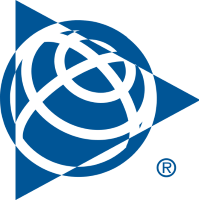
Trimble Inc
NASDAQ:TRMB


| US |

|
Johnson & Johnson
NYSE:JNJ
|
Pharmaceuticals
|
| US |

|
Berkshire Hathaway Inc
NYSE:BRK.A
|
Financial Services
|
| US |

|
Bank of America Corp
NYSE:BAC
|
Banking
|
| US |

|
Mastercard Inc
NYSE:MA
|
Technology
|
| US |

|
UnitedHealth Group Inc
NYSE:UNH
|
Health Care
|
| US |

|
Exxon Mobil Corp
NYSE:XOM
|
Energy
|
| US |

|
Pfizer Inc
NYSE:PFE
|
Pharmaceuticals
|
| US |

|
Palantir Technologies Inc
NYSE:PLTR
|
Technology
|
| US |

|
Nike Inc
NYSE:NKE
|
Textiles, Apparel & Luxury Goods
|
| US |

|
Visa Inc
NYSE:V
|
Technology
|
| CN |

|
Alibaba Group Holding Ltd
NYSE:BABA
|
Retail
|
| US |

|
3M Co
NYSE:MMM
|
Industrial Conglomerates
|
| US |

|
JPMorgan Chase & Co
NYSE:JPM
|
Banking
|
| US |

|
Coca-Cola Co
NYSE:KO
|
Beverages
|
| US |

|
Walmart Inc
NYSE:WMT
|
Retail
|
| US |

|
Verizon Communications Inc
NYSE:VZ
|
Telecommunication
|
Utilize notes to systematically review your investment decisions. By reflecting on past outcomes, you can discern effective strategies and identify those that underperformed. This continuous feedback loop enables you to adapt and refine your approach, optimizing for future success.
Each note serves as a learning point, offering insights into your decision-making processes. Over time, you'll accumulate a personalized database of knowledge, enhancing your ability to make informed decisions quickly and effectively.
With a comprehensive record of your investment history at your fingertips, you can compare current opportunities against past experiences. This not only bolsters your confidence but also ensures that each decision is grounded in a well-documented rationale.
Do you really want to delete this note?
This action cannot be undone.

| 52 Week Range |
49.3
75.4
|
| Price Target |
|
We'll email you a reminder when the closing price reaches USD.
Choose the stock you wish to monitor with a price alert.

|
Johnson & Johnson
NYSE:JNJ
|
US |

|
Berkshire Hathaway Inc
NYSE:BRK.A
|
US |

|
Bank of America Corp
NYSE:BAC
|
US |

|
Mastercard Inc
NYSE:MA
|
US |

|
UnitedHealth Group Inc
NYSE:UNH
|
US |

|
Exxon Mobil Corp
NYSE:XOM
|
US |

|
Pfizer Inc
NYSE:PFE
|
US |

|
Palantir Technologies Inc
NYSE:PLTR
|
US |

|
Nike Inc
NYSE:NKE
|
US |

|
Visa Inc
NYSE:V
|
US |

|
Alibaba Group Holding Ltd
NYSE:BABA
|
CN |

|
3M Co
NYSE:MMM
|
US |

|
JPMorgan Chase & Co
NYSE:JPM
|
US |

|
Coca-Cola Co
NYSE:KO
|
US |

|
Walmart Inc
NYSE:WMT
|
US |

|
Verizon Communications Inc
NYSE:VZ
|
US |
This alert will be permanently deleted.
 Trimble Inc
Trimble Inc
Trimble Inc
Investor Relations
In the expansive realm of geospatial technologies, Trimble Inc. stands as a dynamic force, transforming how industries perceive and interact with the physical world. Founded in 1978, the company initially carved its niche by advancing Global Positioning System (GPS) technology, a foresightful step that laid the groundwork for a diverse suite of offerings. Today, Trimble integrates complex inputs — from satellite systems and laser technology to software innovation — to develop solutions tailored for a multitude of sectors, including agriculture, construction, transportation, and utilities. By enhancing precision and efficiency, Trimble's technology allows businesses to optimize operations and improve productivity. This ability to bridge the digital and physical realms through data-driven insights fuels Trimble's ongoing influence across its chosen sectors.
Trimble earns its revenue primarily through the sale of hardware, software, and services, amalgamating them into comprehensive solutions. The company's hardware, which includes a range of GPS devices, advanced field controllers, and sensor-equipped instruments, serves as the backbone of its offerings. Meanwhile, its proprietary software solutions enable the seamless integration of these hardware products into clients' existing processes, thus driving user engagement and software subscriptions — a model that produces recurring revenue streams. Additionally, Trimble offers consulting and support services, ensuring clients maximize their investment in technology. This holistic business approach not only solidifies client relationships but also fortifies Trimble's market presence, effectively linking technological capability with sustainable financial growth.

In the expansive realm of geospatial technologies, Trimble Inc. stands as a dynamic force, transforming how industries perceive and interact with the physical world. Founded in 1978, the company initially carved its niche by advancing Global Positioning System (GPS) technology, a foresightful step that laid the groundwork for a diverse suite of offerings. Today, Trimble integrates complex inputs — from satellite systems and laser technology to software innovation — to develop solutions tailored for a multitude of sectors, including agriculture, construction, transportation, and utilities. By enhancing precision and efficiency, Trimble's technology allows businesses to optimize operations and improve productivity. This ability to bridge the digital and physical realms through data-driven insights fuels Trimble's ongoing influence across its chosen sectors.
Trimble earns its revenue primarily through the sale of hardware, software, and services, amalgamating them into comprehensive solutions. The company's hardware, which includes a range of GPS devices, advanced field controllers, and sensor-equipped instruments, serves as the backbone of its offerings. Meanwhile, its proprietary software solutions enable the seamless integration of these hardware products into clients' existing processes, thus driving user engagement and software subscriptions — a model that produces recurring revenue streams. Additionally, Trimble offers consulting and support services, ensuring clients maximize their investment in technology. This holistic business approach not only solidifies client relationships but also fortifies Trimble's market presence, effectively linking technological capability with sustainable financial growth.





























 You don't have any saved screeners yet
You don't have any saved screeners yet
